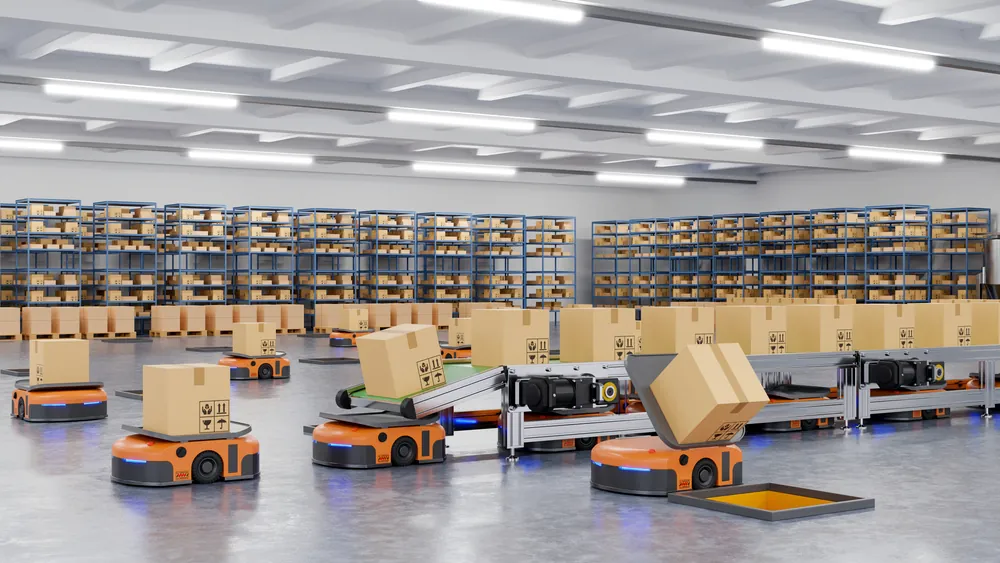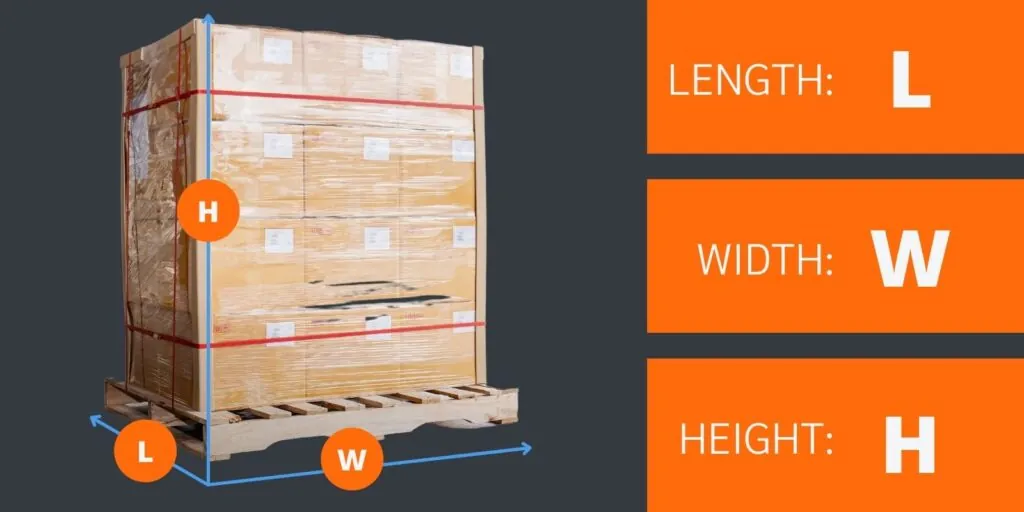What Are The Differences Between LTL and a Parcel
LTL and Parcel are two shipping options commonly used for transporting goods but they differ in several ways.
LTL stands for “Less Than Truckload” shipping. LTL is generally used for shipments more significant than what can be shipped through a parcel carrier but smaller than what would require a full truckload. LTL shipping is usually used for larger, heavier shipments that can’t be transported through a parcel carrier. The weight, density, and distance of the shipment determine the shipping rates for LTL shipments. With LTL shipping, multiple customer shipments are consolidated into one truck for transportation. This means the shipping cost is shared among numerous customers, making it a cost-effective option.
Parcel shipping is typically more expensive than LTL shipping, as it involves more individualized handling and transportation. On the other hand, parcel shipping is used for smaller, lighter shipments that can be transported by a parcel carrier such as FedEx, UPS, or USPS. Parcel shipments are generally under 150 pounds and fit into small to medium-sized boxes. With parcel shipping, the load is picked up at the sender’s location and transported directly to the receiver’s address. The shipment’s weight, size, and destination determine the shipping rates for parcel shipments.
In summary, the main differences between LTL and Parcel shipping are:
- Shipment size and weight: LTL is used for larger, heavier shipments, while Parcel is used for smaller, lighter loads.
- Consolidation: LTL shipments are consolidated with other shipments from different customers, while parcel shipments are shipped individually.
- Shipping cost: LTL shipping is usually more cost-effective than parcel shipping because the price is shared among multiple customers.
- Handling and transportation: Parcel shipping involves more individualized handling and transport, making it more expensive than LTL shipping.
Ultimately, the choice between LTL and Parcel shipping will depend on the size, weight, and destination of the shipment, as well as the customer’s budget and shipping requirements.
Going from parcel to freight shipping for the first time may seem intimidating. Although you might be familiar with the standard practices of parcel shipping, your business could benefit from moving to less-than-truckload (LTL) shipping. There are many differences Between an LTL Carrier and a Parcel Service. In general, parcel shipping is best for 150 pounds or less freight, fits in a smaller package, and can be lifted without assistance. LTL shipping is best for cargo that is over 150 pounds, is bulky, or has an awkward shape.
There are many ways an LTL freight carrier is unlike a parcel service. Knowing the differences between how an LTL freight carrier and a parcel service operates saves you money and helps you avoid shipping hassles and headaches.
5. Weight
When shipping with a parcel service, the less your package weighs, the less it’ll cost to ship. As we stated earlier, parcel service freight is 150 pounds or less. But it’s a little more complicated when shipping with an LTL freight carrier. With LTL, costs of shipments are calculated based on other factors like freight class and density.
Freight class is a system using the tariff that helps determine shipping rates. With NMFC codes, your freight is grouped into freight classes. Freight class is based on density, freight stowability, ease of handling, and liability. The density, or pounds per cubic foot, of your cargo is one factor that defines its freight class. You can easily find the density of your load by using our freight class density calculator tool. In general, shipments that have a higher density have lower freight classes and are cheaper to ship.
You can learn more about how freight class impacts the cost of your shipment by visiting our Easy Guide to Freight Class.
4. Location, Location, Location
A parcel service delivers packages right to your door, no matter what type of location it is. Again, not the case with LTL. An LTL freight carrier must know precisely where to pick up and drop off freight shipments. LTL carriers don’t deliver your cargo to your door or come inside to pick up a load. However, there are add-on services for additional fees that can be included. Depending on the pickup & delivery location, certain types of accessorials (add-ons) are required and must be included when filling out an LTL freight quote.
For example, a liftgate will be required if a location doesn’t have a loading dock or forklift for loading or unloading. Additionally, residential places (i.e., houses or businesses that operate from home) require a driver hauling a large freight trailer to maneuver around suburban streets, avoid hanging trees and drop liftgates to make pickups and drop-offs. This means that the residential location accessorial and liftgate accessorial will be required. Keep in mind that inside delivery and pickup services are an additional service & fee which you must request from an LTL carrier because it’s not part of the standard operating procedures.
Suppose the origin or destination locations are considered limited access locations. In that case, there will be special instructions drivers must follow that include delivering or picking up during certain operating hours or coordinating with multiple parties to complete the shipment.
Knowing how to classify pickup and drop-off locations will help you ship with ease and avoid costly billing adjustments.
3. Authorized Signatures
The standard parcel service usually drops off your packages to you without the need for someone to sign off on any paperwork unless specified. But when shipping with an LTL freight carrier, an individual must be present at both the pickup and delivery locations to properly authorize the pickup and drop-off procedures.
The Bill of Lading (BOL) and the Proof of Delivery (POD) are essential documents you need. The BOL provides all parties involved, meaning the customer, carrier, and driver, with information regarding shipping costs and transport. The POD is essentially a receipt confirming delivered goods. An authorized individual provides the BOL to the freight driver at pickup, and the POD has to have an authorized signature at delivery after checking the shipment for damages.
2. Packaging Requirements
One of the most important things to remember when shipping with an LTL freight carrier is properly packaging your freig
ht shipments. Most LTL freight is crated or palletized as opposed to the typical taped-up boxes you would ship with the standard parcel service.
Proper packaging is so vital that if a driver deems a shipment at pickup not adequately packaged, they could decline to pick it up at that time. This could leave you with the hassle of rescheduling and paying for another pickup. LTL freight carriers also don’t like empty tractor-trailers, so they want to fill their trucks up as much as possible. That means your shipment will be sharing transit with other shippers’ packages. Properly packaging your freight helps avoid damage to your freight and others during the trip.
For best freight packaging practices, check out our Guide to Freight Packaging, which contains information and tips on how to package your freight correctly.
1. You Provide the Information
No matter what you’re shipping, accuracy regarding weight and dimensions is crucial – don’t just guess or estimate. The common parcel service can weigh and measure your parcel on sight, and there’s no question as to what you’ll be paying since the parcel service will be the one quoting you.
Guesstimates are commonly thought to be good enough, but just as the parcel service weighs and measures your parcel, the LTL freight carrier is also required to weigh and measure your shipment. But LTL freight carriers require you to provide the weight and dimensions of your freight shipments when filling out a freight quote. This makes it absolutely essential to be as accurate as possible when measuring and weighing your freight shipments. Suppose you estimate the weight or dimensions, and they are off from the actual weight or dimensions. In that case, the LTL freight carrier will adjust your freight billing invoice accordingly for any discrepancies between your information and theirs. This can lead to unwanted billing adjustments.
The most significant difference between an LTL freight carrier and a parcel service is how easy it is to get discounted shipping rates. By partnering with a third-party logistics company (3PL) like FreightCenter, you get discounted rates and can book your shipments with the best LTL freight carriers.
LTL freight shipping is easy when you have a partner! We’re here to help you every step of the way. Start by getting a free freight quote today, or call us at 800.7167.608. FreightCenter is ready to be your shipping department.



